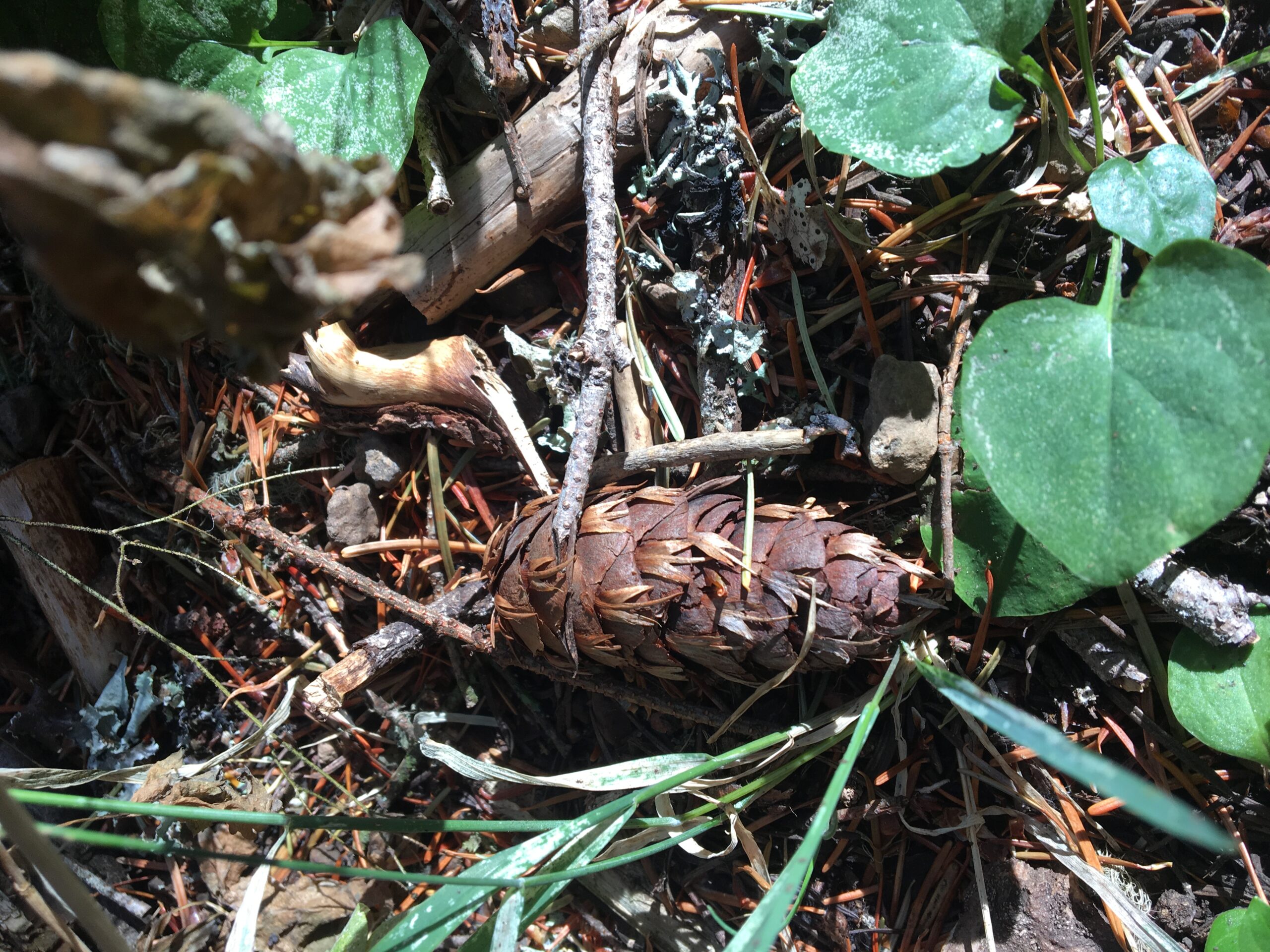I hike through forest where the air is green and damp in the early morning. Pale rays of light filter through the tall evergreen branches, leaving me in the dark and open understory. My footsteps are silent on a soft pad of needles. Fallen pinecones line the trail and I pause to examine one. Protruding from behind each scale on the cone is a three-pointed bract, paler and flimsier than the stiff brown scales. These bracts look separate from the cone while being within it, like a thin bookmark saving a place in a thick text. I recall a story told to me by a friend, an anecdote meant to help people identify trees. In the story, field mice attempt to escape an oncoming wildfire by hiding within a Douglas fir. Douglas fir have thick, fire-resistant bark, and the mice, remembering this detail but confusing the specifics, end up cowering inside the cones. Since the cones are not resistant to fire, this error is memorialized in the cones by the bracts, which, with three points, resemble the hind legs and tail of a mouse. It looks as if teeny mice are diving into the cone.
Cascade-Siskiyou National Monument, Oregon

